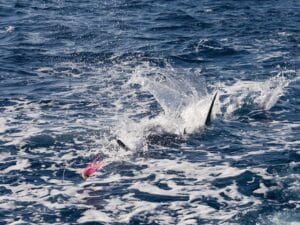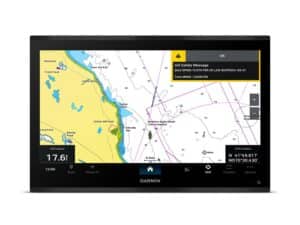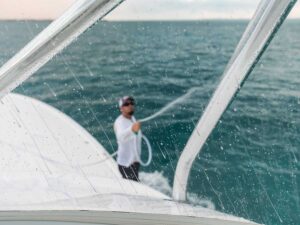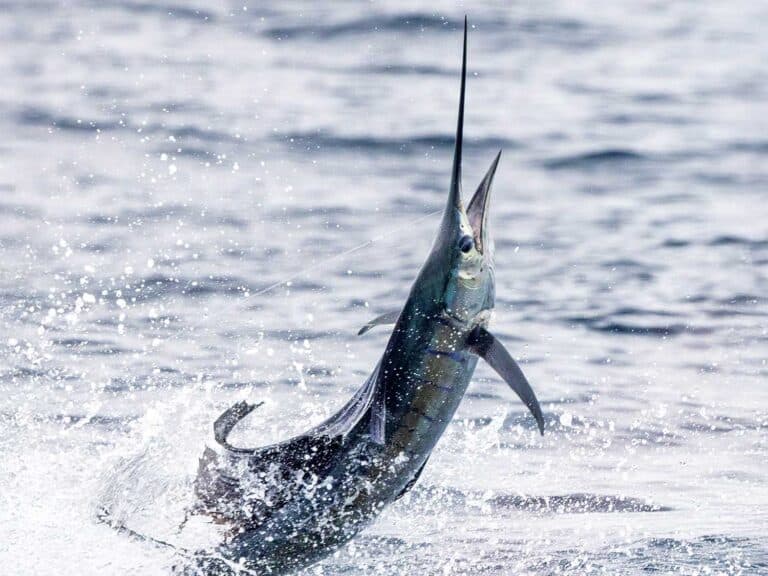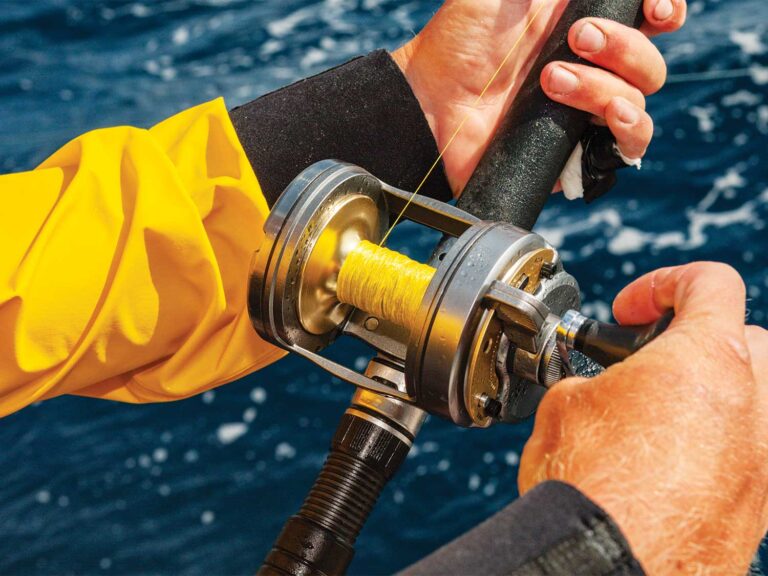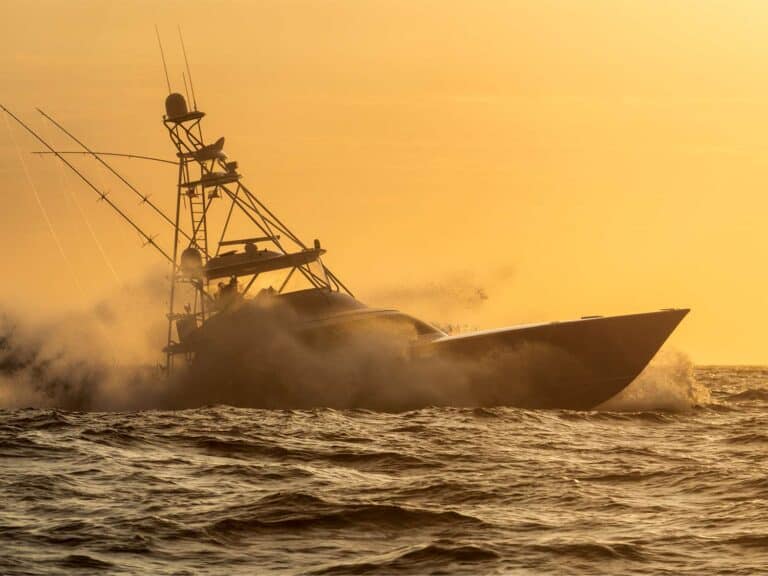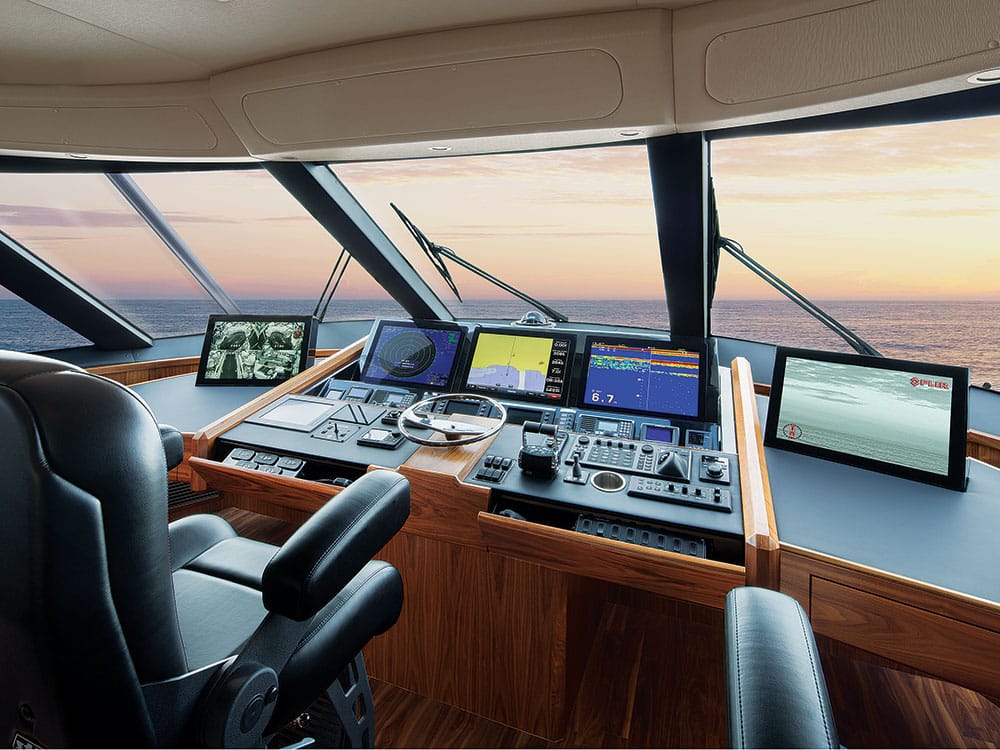
I recently had two 12-inch eSeries Raymarine displays installed on my boat’s helm. No, it isn’t an inboard-powered, tuna-towered offshore sport-fisher; it’s a Ranger 2510 bay boat. An acquaintance, proud of his 12-inch Simrad unit in a pop-up display pod on his own boat, was incredulous when I told him.
“Two displays? What did you do that for?” he asked.
“Because they were the largest displays that would fit the height and the most that would fit in the width,” I replied.
Bigger Is Better
That’s the rule now: The best bet is bigger and more-numerous displays. Cutting corners on displays in a $5 million sport-fisher is a false sense of economy, and it’s one mistake billfish captains are learning to avoid.
Why? Even though we may have reached a temporary plateau in marine-electronics development, they are so capable these days that we are entering a new era of product integration that goes well beyond navigation and fish finding. And to multitask (we do call them multifunction displays, after all), you need a lot of real estate on the helm and a powerful microprocessor working behind the scenes, like the Wizard of Oz, in order to keep everything humming along. So, even if that dashboard real estate is pricey, it’s nothing in the face of the price tag of a new 60-foot boat.
Do buyers of these vessels ever have regrets regarding their electronics packages? Things they woulda, shoulda, coulda done differently? Not according to Randy Ramsey, president and founder of Jarrett Bay Boatworks. “Our customers are well-informed about what they want,” says Ramsey. “They’ve researched electronics in particular, and have clear ideas of how their helm should be laid out.”
After building more than 50 of these remarkable sport-fishing boats, Ramsey has one suggestion on electronics: “Buy the biggest displays that will fit the bridge, and install as many of them as possible,” he says.
Digital Switching: Managing It All
When you look back just 15 years, a chart plotter, 50 kHz sounder, radar and sometimes an autopilot were all the system was called upon to manage. That’s all changed. Now captains and owners want chart plotters, wide-, side- and bottom-scanning sonar, 3D-image processors and chirp technologies, dual radars, XM weather overlay — oh, and don’t forget the forward-looking infrared imaging cameras to keep the boat safe in the dark. Clearly the multitasking, multifunction display is doing far more than it was 10, or even five years ago. But wait, there’s more!
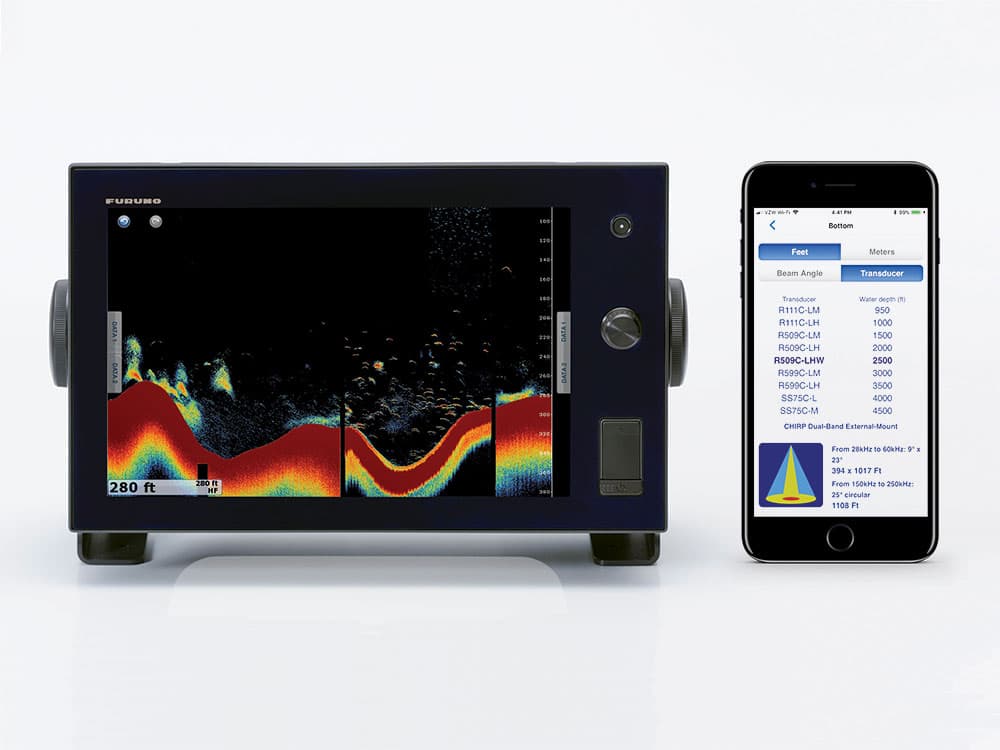
Then CZone brought digital switching to the displays, integrating everything from light switches to bilge-pump switches to the touchscreen displays. They did it because, increasingly, boat buyers familiar with the operation of touchscreen smartphones are demanding the full integration of everything they do into one pretty picture. Raymarine has its proprietary digital-switching system, and the storied brand, Viking Yachts, uses one of its choosing. Audio is piped through your displays, and soon, engine instruments will completely disappear from your helm in favor of data gateways that feed ECM data straight through your MFD. It’s already commonly found in the last three model years of cruisers and center consoles, but inboard builders are late bloomers. That will change soon.
Choosing the Right Transducer
Though Ramsey is confident his buyers are on the right track with their electronics packages, Peter Braffit of Airmar notes that some fishermen are still choosing the wrong transducers for their fishing style. The problem began with the new chirp sonar technology.
“The first chirp transducers were narrow beam,” he says. “While they put a lot of energy in that beam to create high-resolution images, they missed fish normally picked up by the wider-beam 50 kHz transducers.” As a result, early adopters of chirp technology weren’t all that pleased with the performance.
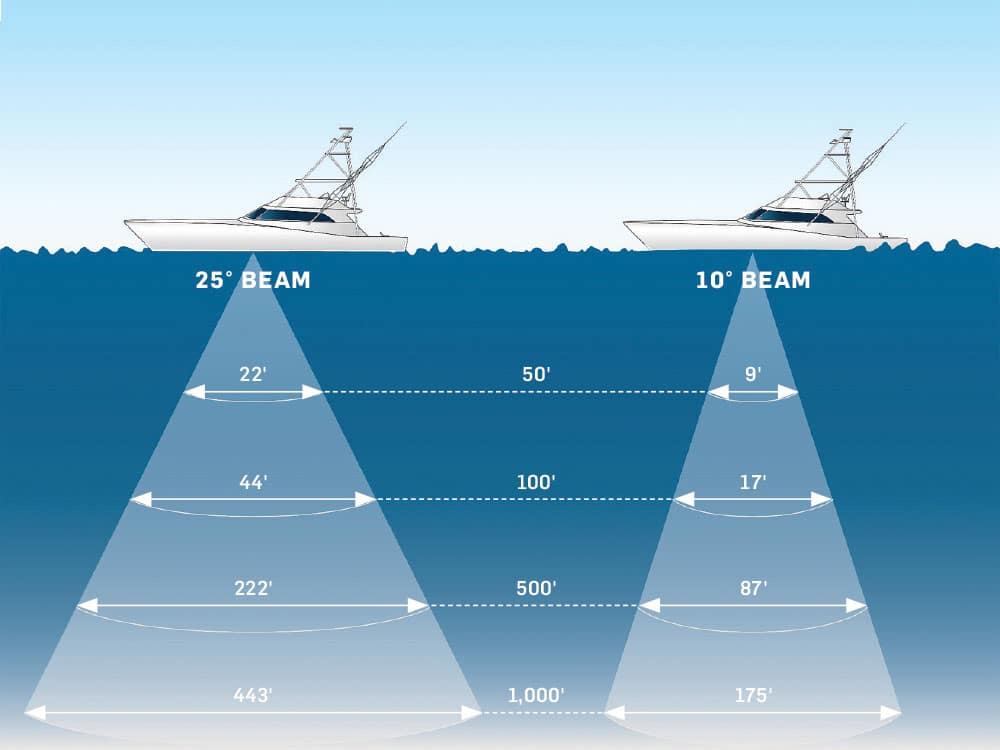
Airmar went to work and created two things to help in the transducer selection process. The first is a series of wide-beam 25-degree chirp transducers. The second is an app called Gemeco iNstall. The app is needed because the Airmar customer might be choosing the correct transducer body for his boat, but not the right inner metric. Poor choices in frequency and particularly, poor choices in beam angle, were hurting performance. And once those were installed, the boat had to be hauled out in order to replace them. That can be a pricey proposition for the owner.
Regarding beam angle, Airmar began to develop chirp transducers with wide low-frequency beams and narrow high-frequency beams. The result was that chirp sonar began to capture the big picture that fishermen were used to with the standard 50 kHz sonar but with the incredible resolution of the new chirp equipment.
In short, the electronics customer who goes by the axiom “bigger and more is better,” and adds the marlin fisherman’s corollary that “wider is best” regarding transducers, will be fishing in the most fertile waters.

